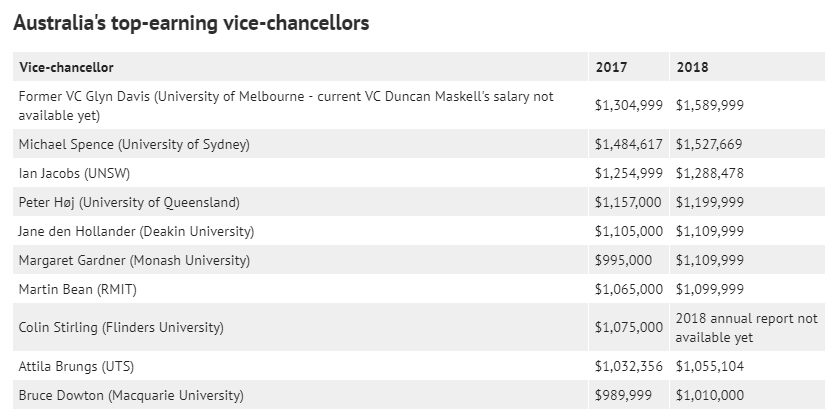Over the weekend, Fairfax reported that the salaries of vice chancellors at Australia’s universities has soared towards $1.5 million, which comes at the same time as universities are making billions of dollars in fees from international students, teaching staff are increasingly being placed on casual contracts, and Australian universities are near the bottom of global rankings for their staff-to-student ratios.
This article received an angry response from Fairfax readers, with several voicing their disapproval in Letters to the Editor. Below are best articulated samples of the comments received:
The alleged operation of “market forces” in higher education (and reductions in the Commonwealth Operating Grant) led to the casualisation of teaching staff, ruthless exploitation of the overseas student market, and the employment of vast numbers of previously unneeded executive and administrative staff whose salaries are afforded by enormously high student fees and the wholesale elimination of permanent teaching staff.
…the consequences of which can be felt everywhere, but no more clearly than in the contrast between the shabbiness of the classroom in which the sessional tutor labours, and the palatial offices and designated parking spaces of the rent-seekers in the vice-chancellery.
Rod Beecham, Monbulk
The huge increase in international student revenue has seen universities become powerful commercial entities with little real change in their public accountability. Alongside this has come a massive change to their internal culture, values and focus.
While vice-chancellors are earning ridiculous and undeserved salaries, many other university executives are on huge salaries and see themselves as players in the corporate world.
While vice-chancellors gallivant around the globe “making critical connections”, university executives spend the majority of their time looking at revenue targets and cutting overheads. Patronage is strong and the internal politics within universities is staggering.
Despite this, many universities are still huge and highly inefficient…
Andrew McFarland, Templestowe
Both commentators have hit the nail on the head. Australian university executives have grown fat on the ‘rivers of gold’ from international students, whose numbers have almost doubled over the past six years:
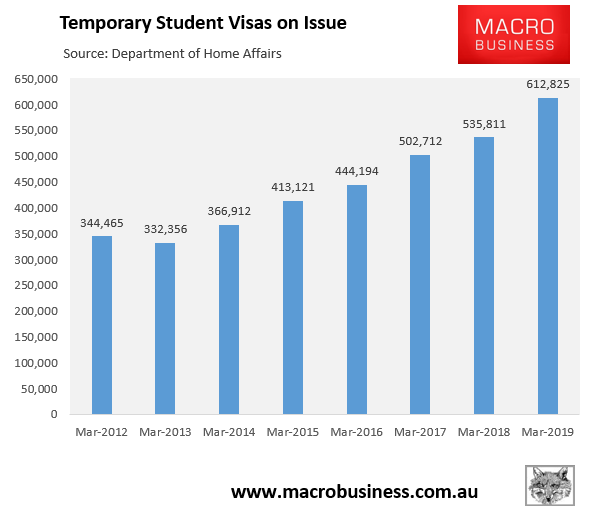
Driving a massive influx in fees, as illustrated by the below chart from the NSW Auditor-General:
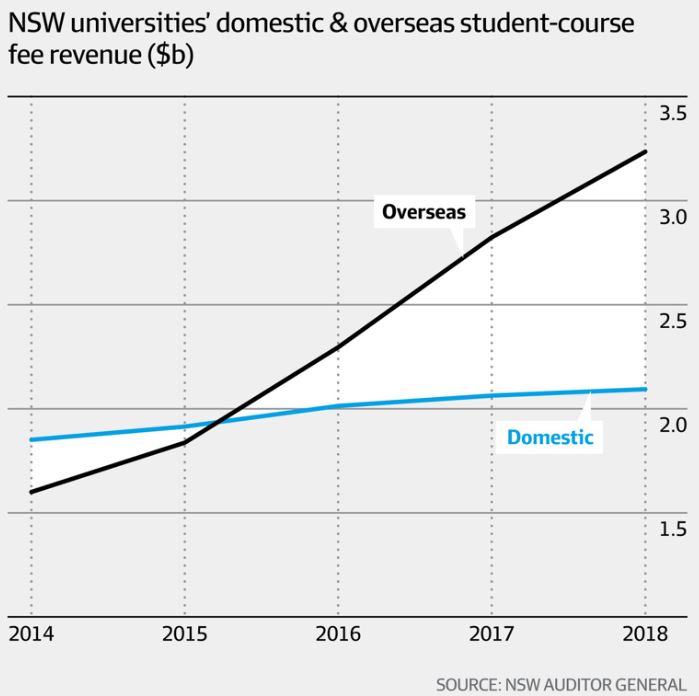
As MB keeps highlighting, the universities have wasted this fee windfall on bloating their bureacracies, as illustrated by the 11,390 increase in full-time equivalent (FTE) non-academic staff between 2009 and 2017, which easily exceeds the 8,240 increase in academic staff over the same period, according to the Department of Education:
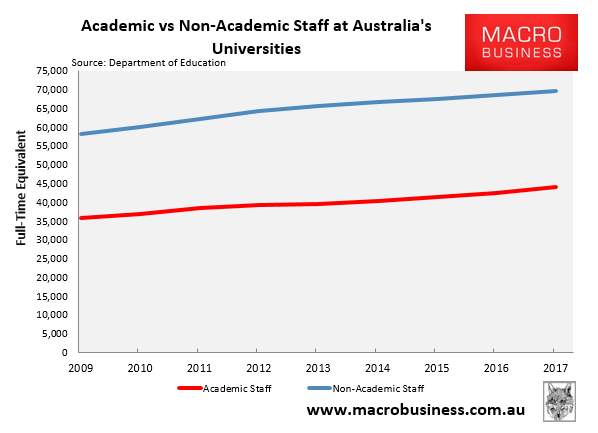
What makes this waste especially repugnant is that the ratio of students to academic (teaching) staff at Australia’s universities has worsened materially alongside the international student flood, increasing from an average of 20.05 students per academic staff member in 2009 to 21.44 in 2017:
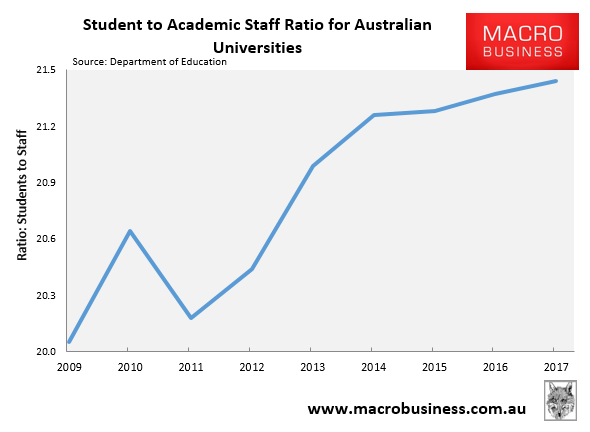
In fact, according to the QS World University Rankings, Australia ranks near the very bottom of global universities on this measure, suggesting teaching quality is unambiguously being eroded.
Given that most international students are from Non-English Speaking Backgrounds, and generally require more intensive teaching assistance than domestic students, the deterioration in the student-to-staff ratio is doubly worrying.
Vice chancellors and senior administrative staff are clearly profiting from the explosion in fees from international students, while the quality of Australia’s university system is being destroyed, to the detriment of students, taxpayers and the broader economy.
It’s time to hold them to account.

